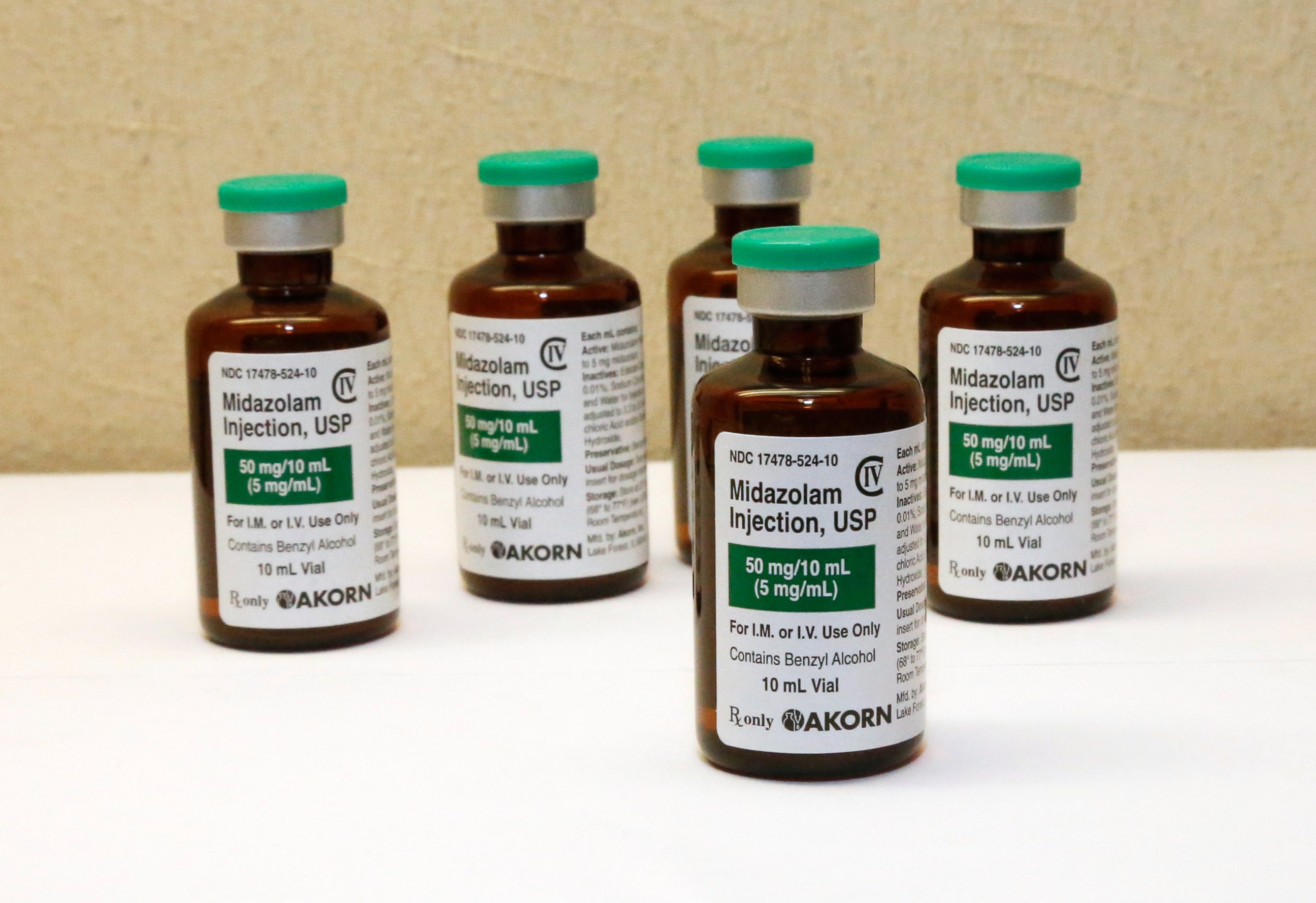The Drug at the Center of the Supreme Court Case on Lethal Injections
Why a lawsuit wants to outlaw the use of midazolam in lethal injections.
— -- The U.S. Supreme Court is again grappling with the death penalty by examining the effectiveness of the drugs used to put prisoners to death in Oklahoma.
Justices heard arguments today from the lawyers of three Oklahoma death-row inmates who want to outlaw the use of midazolam in the three-drug cocktail used in the state's lethal injections.
At the heart of the matter is whether midazolam, a sedative, can cause inmates to go into a coma-like state before the other two drugs used in the cocktail are administered, causing death.
Lawyers for the death row inmates argue that midazolam does not effectively put inmates in a coma-like state in which they could be spared the pain of the other drugs being administered for the execution.
Midazolam belongs to a class of drugs called benzodiazepine, which also includes Xanax and Valium. Before benzodiazepine was used in lethal injection cocktails, barbiturates such as sodium thiopental were more commonly used for executions.
But after drug makers -- both in the U.S. and in Europe -- stopped selling sodium thiopental to prisons for executions, states have turned to alternatives such as midazolam, experts said.
Midazolam works by decreasing the excitability of neurons in the brain and is used commonly before surgery or during common hospital procedures that don't require general anesthesia, including colonoscopies or bronchoscopies.
Dr. David Waisel, an associate professor of anesthesia at Boston Children's Hospital and Harvard Medical School, explained that the drug is commonly given before a person is taken to an operating room and put under anesthesia.
"Patients don't feel pain or discomfort as they go to operating room," Waisel explained to ABC News, describing how midazolam is used in hospitals. "It does not make you go to sleep -- it's not supposed to. It's supposed to help you relax."
Waisel clarified that the medication is not designed to block pain but to decrease anxiety and cause amnesia.
After a patient is taken to the operating room they would then be given an anesthetic that leaves them unconscious and unable to feel pain, Waisel said.
At issue in this Supreme Court case is whether midazolam can effectively render a prisoner unconscious and unable to feel pain before other drugs are administered.
The drug has been questioned for use in executions after its use in two executions was accompanied by extreme complications. The lawsuit itself was filed after the execution of Clayton Lockett in Ohio. A state investigation into the execution found that Lockett writhed on a gurney for at least 43 minutes before dying after being given the drug cocktail including midazolam through an IV line in his groin. The vein with the IV line was later reported to have collapsed.

The drug was also used in combination with another drug for sedation in the execution of Dennis McGuire in Ohio. McGuire appeared to gasp and snort during his 26-minute long execution according to witnesses at the execution. Ohio has not used the drug in executions since then.
Because executions are not a medical procedure, the U.S. Food and Drug Administration has no say in which drugs are used for executions.
Multiples states have started to turn to sedatives like midazolam that were not previously used in lethal injections, after suppliers of more commonly used drugs stopped selling the drugs to prisons.
The purpose of midazolam is not to block pain the way other anesthesia does, Waisel noted, but to relax a patient. According to medical literature, the drug can technically be used to produce general anesthesia but that the onset of unconsciousness takes longer than other sedatives used in earlier lethal injections.
In a clinical setting, the drug would not be used to put a patient under general anesthesia because the drug does not produce all of the desired effects, including amnesia, unconsciousness, analgesia (no pain), inhibition of autonomic reflexes, and relaxation of muscles. To achieve all of these reactions, a mix of medications are used by doctors during surgery.
Dr. Howard Nearman, an anesthesiologist at University Hospitals Case Medical Center in Cleveland, said midazolam is often used in conjunction with other medications so that a patient does not get too much of a single dose of medication when they are put under anesthesia. Nearman said too much of the drug can cause a fatal overdose.
"It's safer to combine it with other agents so you don't overdose on any one agent,” he told ABC News.
ABC News' Austin Howard and the Associated Press contributed to this report.




